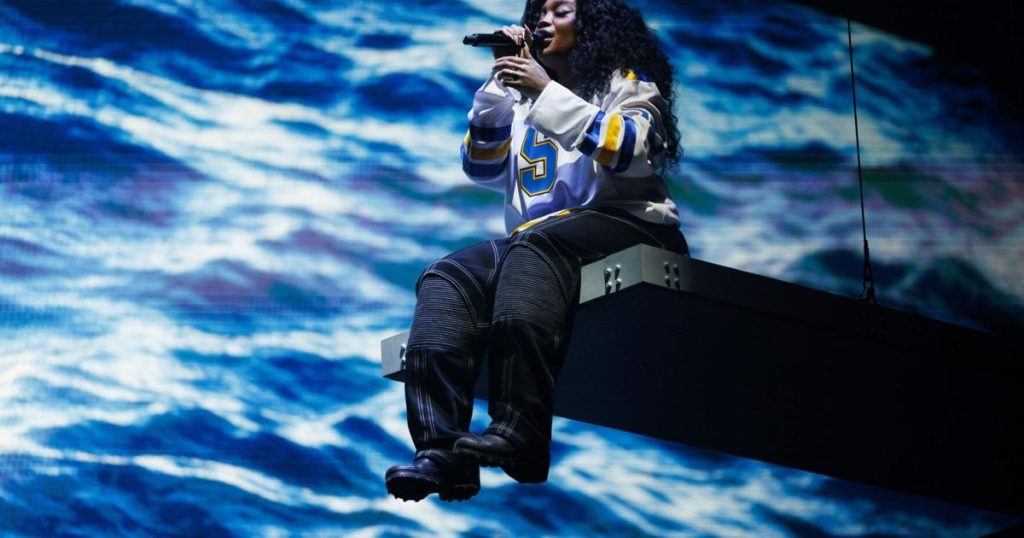LOS ANGELES — In case you were doubting the notion that women have to work harder and achieve more to be considered equal to their male counterparts, let’s have a look at Hollywood, 2023.
Every year studies examining gender (dis)parity reveal the same dismal statistics: By virtually every measure, women remain consistently and infuriatingly underrepresented in the entertainment business. And this year was no different.
According to the Center for the Study of Women in Television and Film at San Diego State University, only 33% of film protagonists in 2022 were female (up 2% from the previous year), while a mere 11% of those films were directed by a woman. Indeed, women constituted only 24% of directors, writers, producers, editors and cinematographers.
So, beyond paraphrasing Shakespeare’s famous line — though her numbers be but little they are fierce — how does one go about explaining what happened next?
People are also reading…
For starters, this was the year Greta Gerwig and Margot Robbie recharged a dying box office and broke domestic and international records with the $1.6 billion earner “Barbie” (while undoubtedly introducing Christopher Nolan’s “Oppenheimer” to a whole new audience with the much-touted “Barbenheimer” effect).
This was the year Beyoncé and Taylor Swift revitalized the concertgoing experience, and redefined “sold out,” with their Renaissance and Eras tours. Then they took that success to the big screen.
Released in October, Swift’s “Eras” concert film beat Martin Scorsese’s highly anticipated “Killers of the Flower Moon”; Queen Bey’s “Renaissance” movie, which opened earlier this month, will no doubt have a similar impact.
Off stage and set, women played key roles in this year’s historic strikes. Meredith Stiehm, president of the Writers Guild of America, West, and Ellen Stutzman, the WGA’s chief negotiator, took on the openly hostile and dismissive Hollywood studios to win key concessions after a 148-day writers’ strike that began in May.
They were willing to fight alone for, among other things, better pay, increased residuals and AI protections if they had to, but as it turns out, another female-led organization was right there with them.
In July, Fran Drescher, president of the Screen Actors Guild-American Federation of Television and Radio Artists, railed against studio greed in a to-the-barricades barnstormer before calling for an unexpected actors’ strike that lasted 118 days.
Despite much pressure for the actors to settle their contract dispute quickly after the writers went back to work, Drescher resolved to not “cave,” holding out for improved residuals and protection against the indiscriminate use of AI.
Not surprisingly, both Stiehm and Drescher were reelected during the strikes.
In case you were wondering, the last time the writers and the actors struck together, both unions were headed by men — Curtis Kenyon at the WGA and Ronald Reagan at SAG.
It wasn’t just one side of the board either. Facing those unions this time around was Carol Lombardini, veteran chief negotiator for the Alliance of Motion Picture and Television Producers. (Though only one of the “big four” studio heads who took part in the final negotiations was a woman — NBCUniversal’s Donna Langley.)
Two days after the actors’ strike ended, this year’s remarkably gyno-centric Grammy nominations were announced. Female artists and musicians filled seven of the eight slots for album, record and song of the year, and half those for best new artist.
SZA led the list with nine nominations, followed, with seven each, by Phoebe Bridgers and Victoria Monét. Jon Batiste was the only male artist to receive six nominations, which puts him in the company of Swift, Olivia Rodrigo and Billie Eilish.
Women played smaller but still outsize roles in other Hollywood arenas, from horror — all hail the meme-able “M3GAN” — to period drama — all hail Netflix hit “Queen Charlotte” and the continued reign of Shonda Rhimes. Natasha Lyonne gave Peacock its breakthrough original programming success with “Poker Face,” while Quinta Brunson helped keep broadcast TV alive with “Abbott Elementary.”
Not every female-led project was a huge success, of course. Reaction to Meg Ryan’s return to rom-coms in “What Happens Later” was muted and the MCU’s female-centric “The Marvels” was an early box-office bomb, though both films, it must be noted, premiered before the actors’ strike ended, and thus before the gears of the Hollywood publicity machine were turning at full speed.
Given the larger picture — women ruled the entertainment industry in virtually every way possible — those shouldn’t even be worth mentioning. Except that for women, the “fails” are, historically, given far more weight than the wins.
A successful female-directed film, a hit female-centric comedy, a supercharged female musical artist, a powerful female industry leader — all are too often considered one-offs, anomalies.
As opposed to, say, proof that women, given the opportunity, resources and support, can shine just as brightly as men.
Or fail just as disappointingly, if it comes to that. How do you learn any craft or profession if you aren’t allowed to fail without being written off?
Over the years, critics and columnists (including me) have eagerly used the smallest growth in the ranks of female leads, directors, cinematographers, musical artists or executives to declare this or that 12-month period “the year of the woman.”
It’s pathetic, really, that the work and/or recognition of a handful of people is necessary to pronounce an entire gender worthy of opportunity and attention.
So, this is the last time I personally will ever grow hoarse shouting the obvious. You don’t have to be male to succeed in, change or lead any part of the entertainment industry. Look at who did what in 2023.
This is the year women saved Hollywood. And by God, it is beyond time that Hollywood returned the favor.
